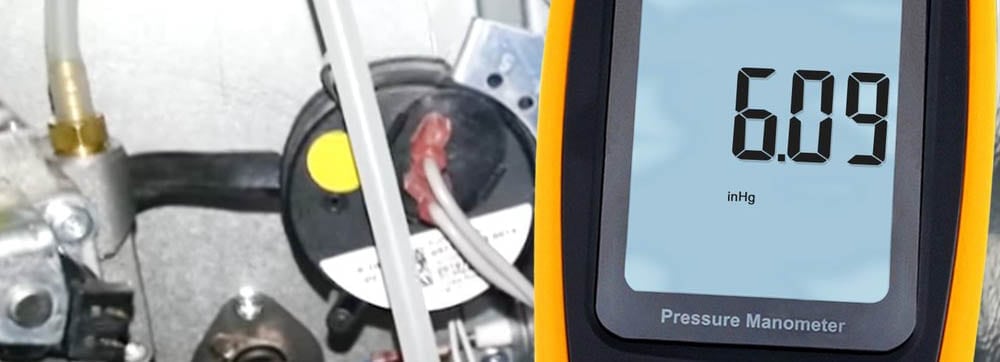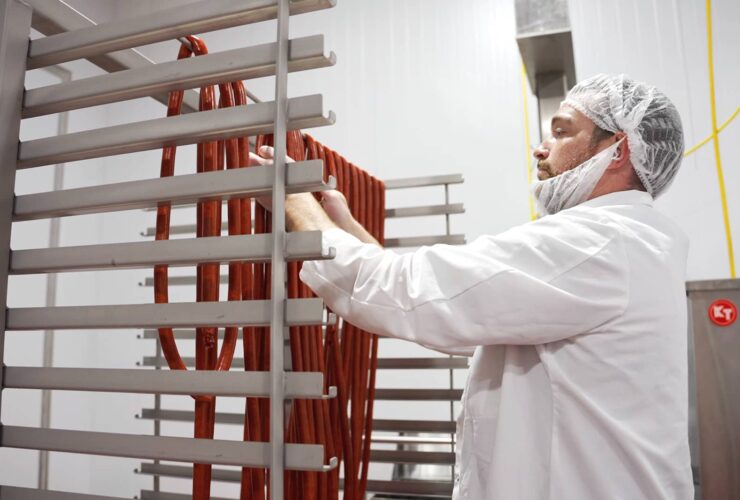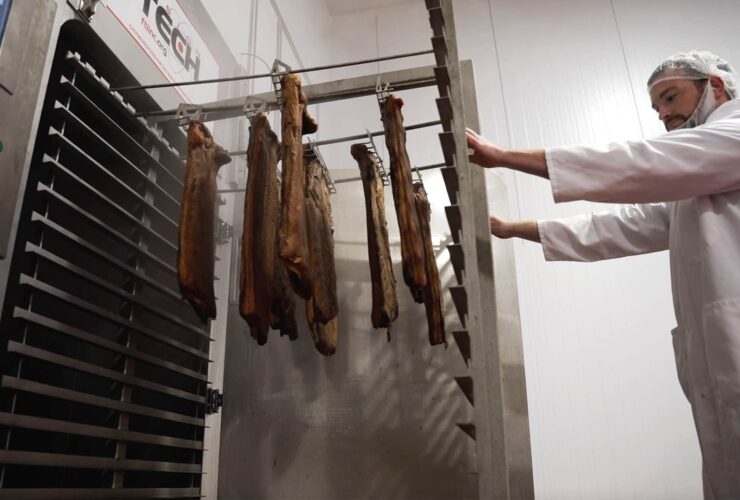Maintaining a food processing oven requires special tools to ensure the oven is operating at peak performance.
Evaluating air flow and speed, finding air leaks, setting dampers, determining static pressures and gas burner settings, and calibrating probes are normal, sometimes every day, maintenance tasks that require specialized tools.
Larger food processing companies likely already have these tools on hand. However, start-ups and smaller food processors may not have needed these oven maintenance tools before — and might not be equipped to properly maintain their oven when it is installed.
Stock Your Oven Maintenance Toolbox
Before investing in a new smokehouse or dehydrator, make sure your maintenance team has these tools on hand — and knows how to use them.
[clickToTweet tweet=”Ensure your oven maintenance crew has these tools on hand!” quote=”Ensure your oven maintenance crew has these tools on hand!” theme=”style6″]
Turbo Meter
A turbo meter is a tool used to determine air flow and speed in your oven. It is based on the principle that a freely turning turbine will rotate at a speed directly proportional to the wind speed.
The most common design suspends the turbine on sapphire jewel bearings and senses rotation with an infrared light beam, which adds no friction to the turbine. A hand-held model is the best choice for using in your oven.
Using a Turbo Meter:
Always refer to the user manual that comes with your turbo meter, but the basic use is as follows:
- Set meter to desired scale
- Hold the turbo meter with display facing you so the wind will pass through the turbine
- Within seconds, the turbo meter will display the correct wind speed
Why It’s Needed:
Your maintenance team should be taking regular readings of air speed in your oven and recording the results. This will allow you to catch variations in air speed that come from issues with the oven fan, misaligned dampers, or leaks in the oven cabinet — all issues you want to catch early so as to avoid negatively impacting your product yields and consistency.
Hand Pump Calibrator
A hand pump calibrator is used to generate pressure for the testing, adjusting, and calibration of mechanical and electronic pressure measuring instruments.
The most common design attaches to the instrument to calibrate and uses a squeeze ball to build pressure, which is measured on the readout dial. This allows you to ensure that the instrument is reading the correct pressure.
Using a Hand Pump Calibrator:
Always refer to the user manual that comes with your hand pump calibrator, but the basic use is as follows:
- Connect hose fittings and calibrators to adapters
- Connect master instrument to pump
- Squeeze ball to build pressure
- Read pressure measurement on dial
- Adjust instrument if necessary
Why It’s Needed:
Your maintenance team should be calibrating the pneumatic actuators found on your oven to ensure readings used in the control panel are correct. Gas burners (if applicable) and exhaust dampers use pneumatic actuators to open valves to the specified levels in the control panel (i.e. open the exhaust damper to 50%). If the actuator is not calibrated correctly, valves won’t be open to the level indicated, which can affect your product and cause a safety hazard.
Manometer
A manometer is a tool used to measure pressure. It is based on the principal that the most accurate way to measure pressure is to balance a column of liquid of known weight against it and measure the height of the liquid column so balanced.
The most common design consists of a column of liquid in a tube whose ends are exposed to different pressures. The column will rise or fall until its weight is in equilibrium with the pressure differential between the two ends of the tube.
The manometer will read the difference in height of the liquid and display the pressure measurement in Hg (inches of mercury) or WC (inches of water) on a digital readout.
Using a Manometer:
Always refer to the user manual that comes with your manometer, but the basic use is as follows:
- Bring the display back to zero using the restore or zero toggle
- Apply the measurement nodes to the item you’re measuring
- Read the pressure measurement on the display
Why It’s Needed:
Your maintenance team should be taking regular readings of the static pressures and gas burner pressures (if applicable) in your oven and recording those pressures. This will allow you to catch any variations in pressure that could indicate a leak or malfunctioning component that could affect your product or cause a dangerous situation.
Calibration Device
A calibration device is used to adjust an instrument accuracy, often associated with a specific application, such as temperature. It helps ensure that measurement equipment can be relied on to deliver predictable, accurate results that meet quality standards.
The style and function of a calibration device is based on the specific application that is being tested, but usually requires the instrument to be inserted into the calibration device to test its accuracy against simulated applications, such as temperature.
Using a Calibration Device
Always refer to the user manual that comes with your calibration device, but the basic use is as follows:
- Set the standard and tolerance range on the device
- Insert instrument to be calibrated
- Adjust the difference on the instrument
Why It’s Needed
A smokehouse, dehydrator, or steam oven requires readings of temperature and humidity to operate correctly. Control panels, recipes, and even HACCP requirements all revolve around the readouts from temperature, humidity, and product probes in the oven. An inaccurate probe will give an inaccurate measurement, which could result in product not reaching proper temperature for killing bacteria.
Your maintenance team should be calibrating product and temperature probes on a consistent basis to ensure your oven and HACCP records are accurate, and that your product is being cooked to the required temperature to avoid a costly recall.
Equipped for Oven Maintenance
Equipping your team with the proper tools to efficiently and effectively perform oven maintenance is a necessary step before investing in a food processing oven. Preventative maintenance, especially the maintenance outlined in this article, is essential for ensuring your oven is running at peak performance and producing the results you want in your product.




